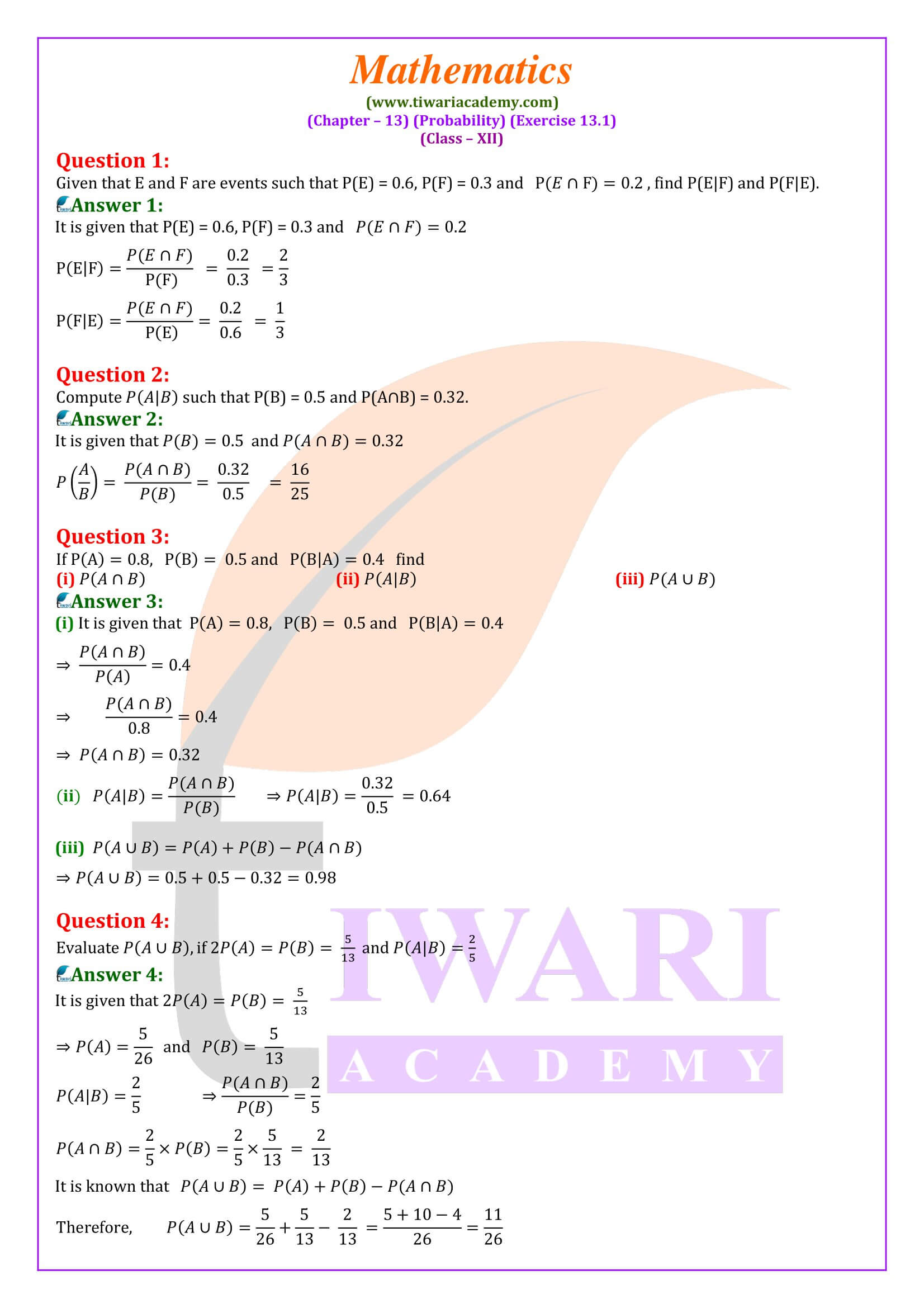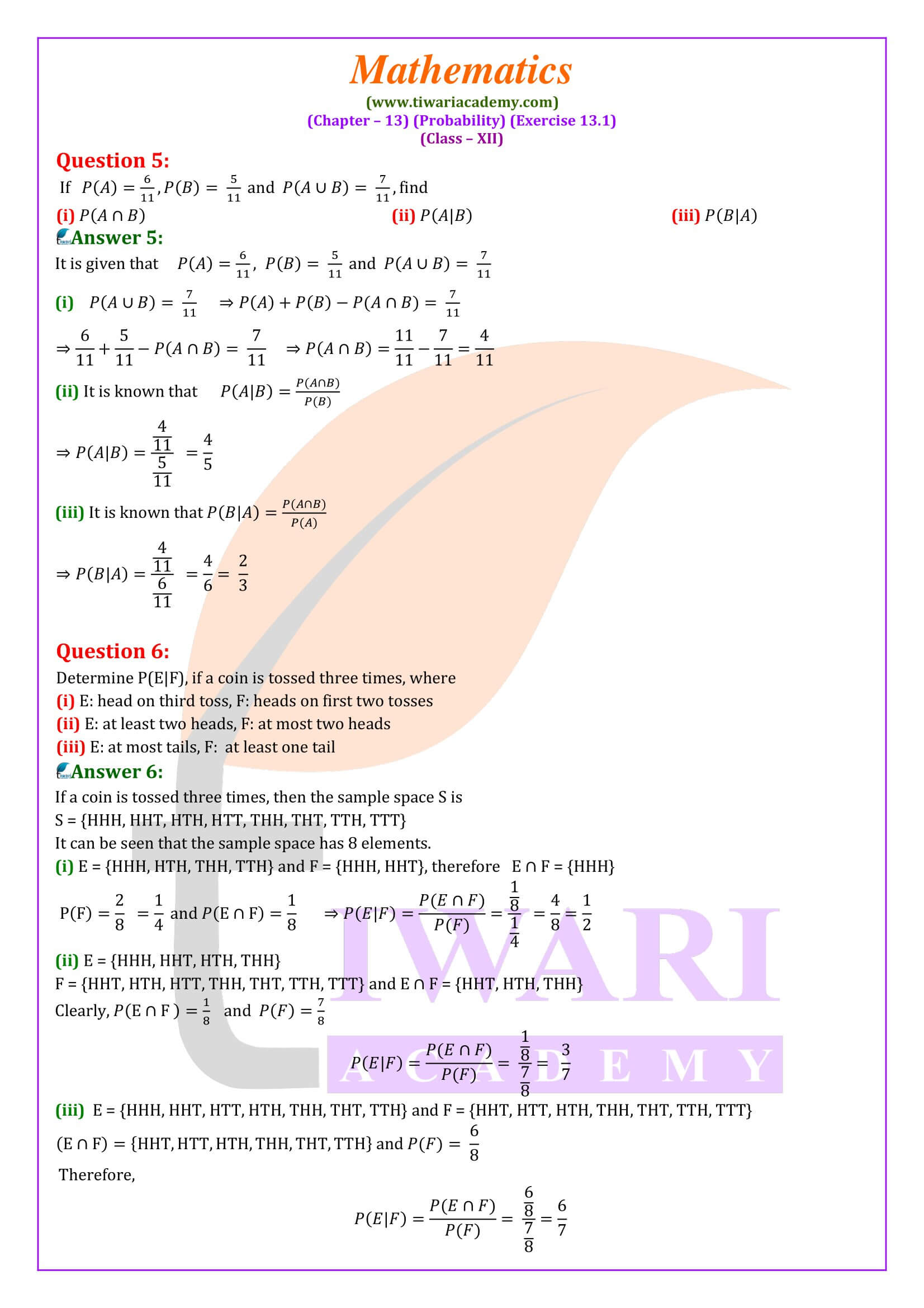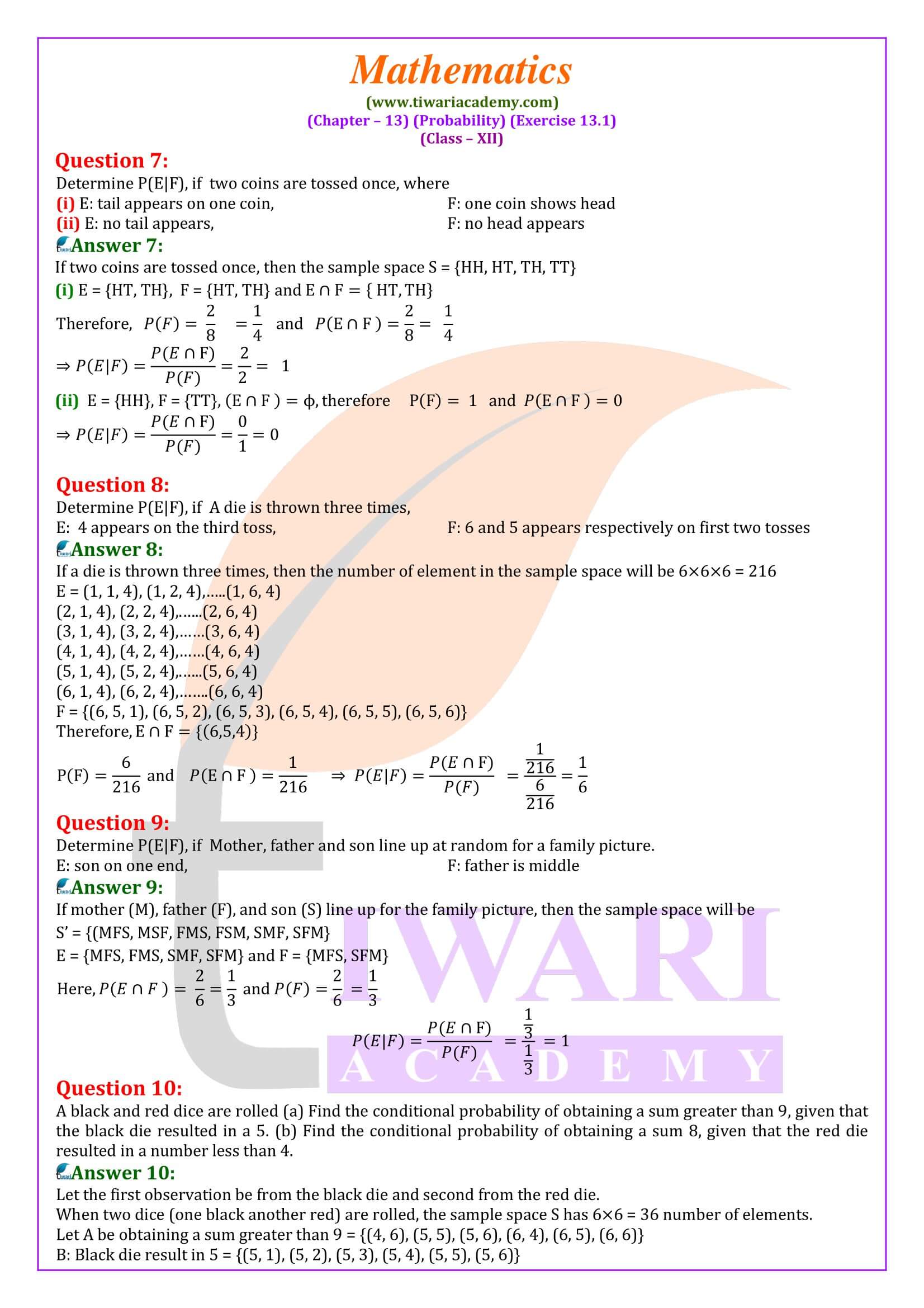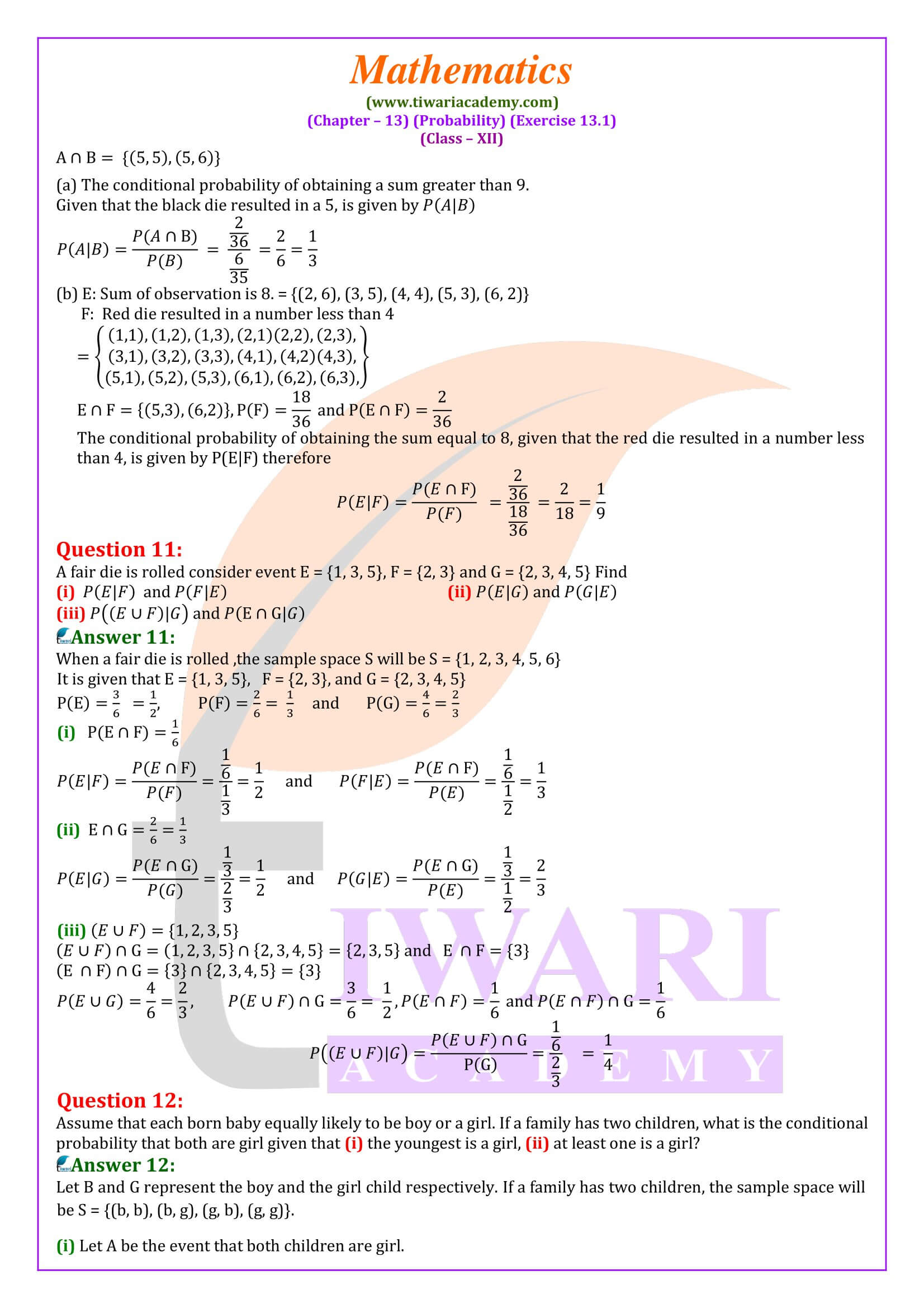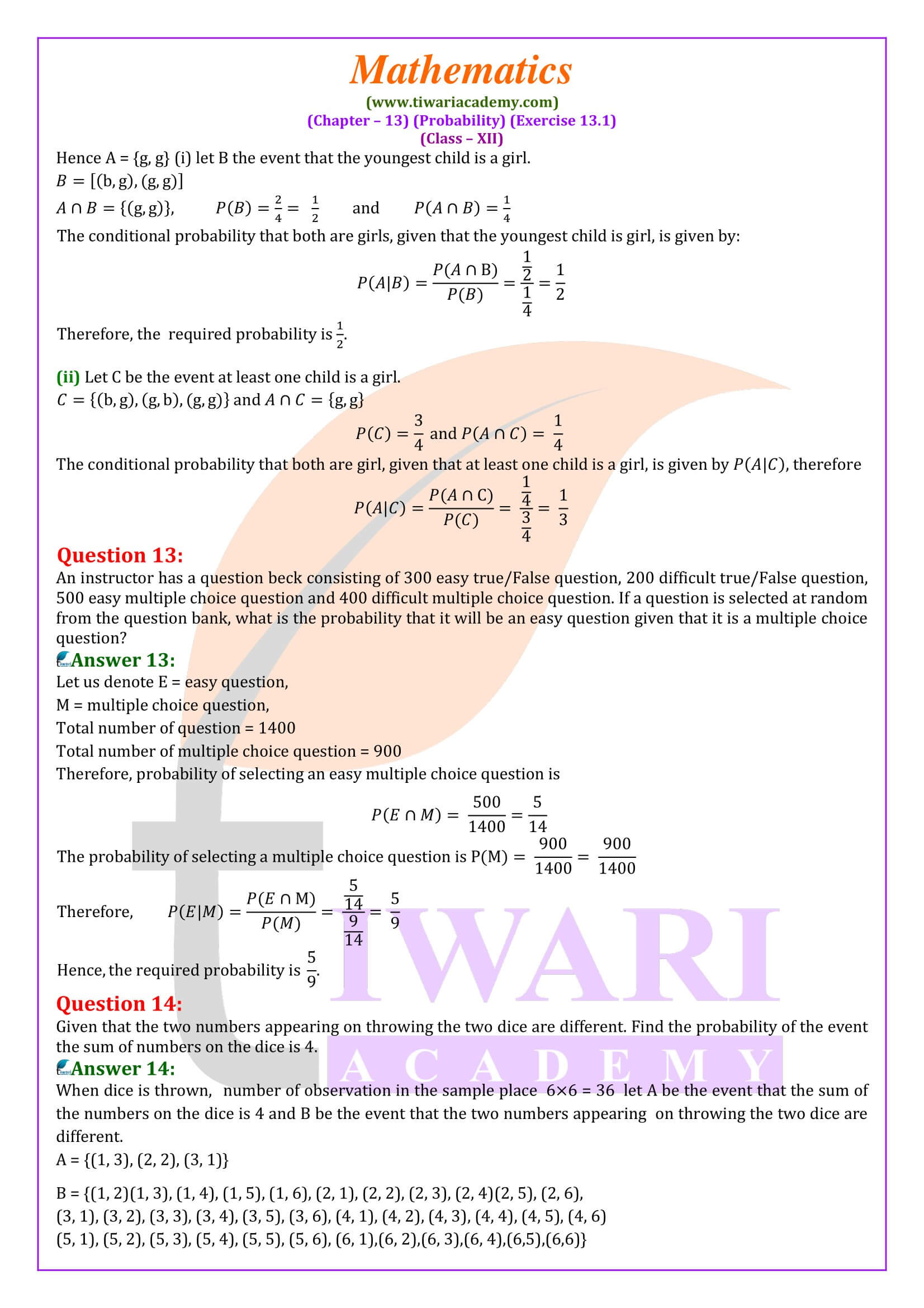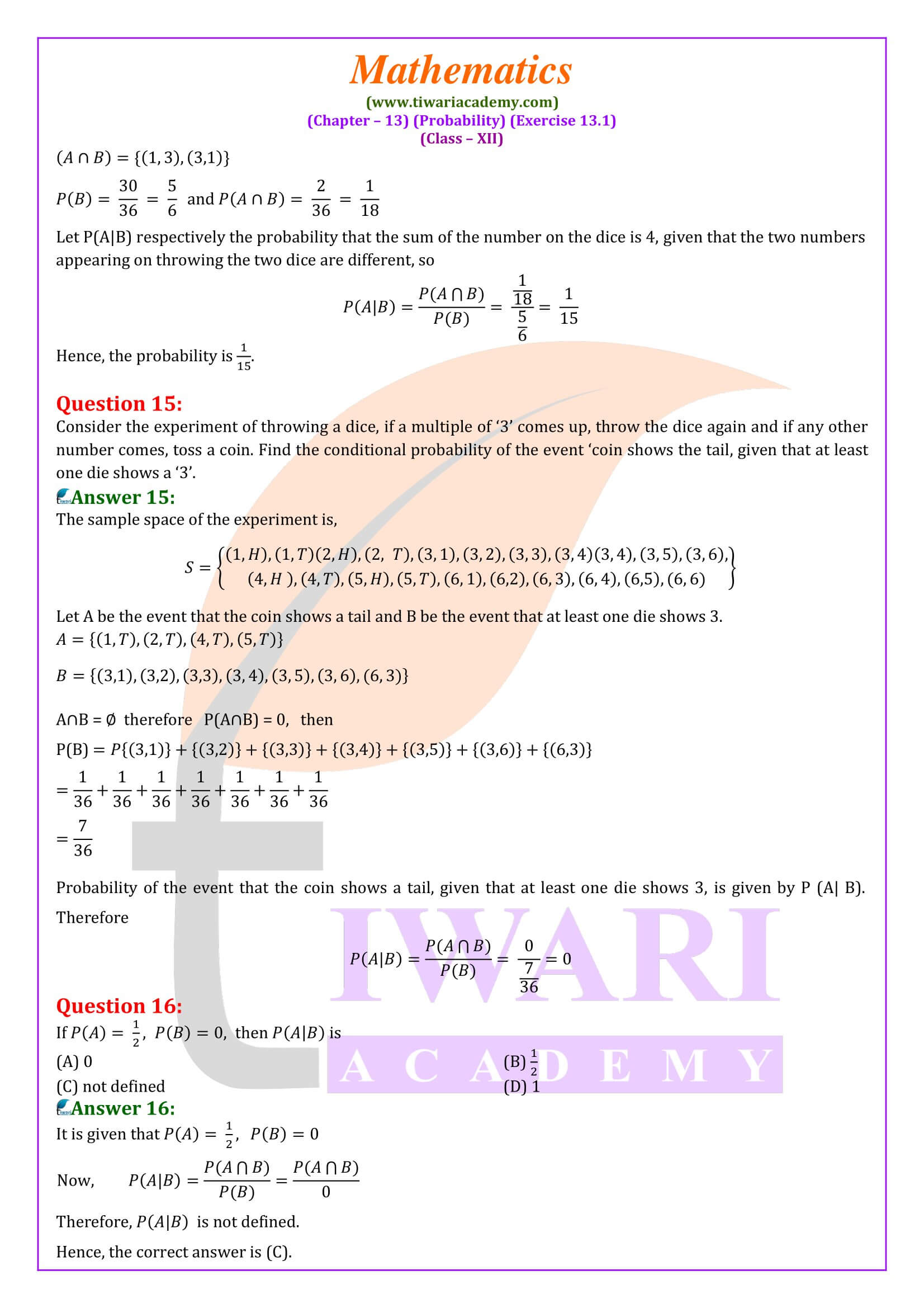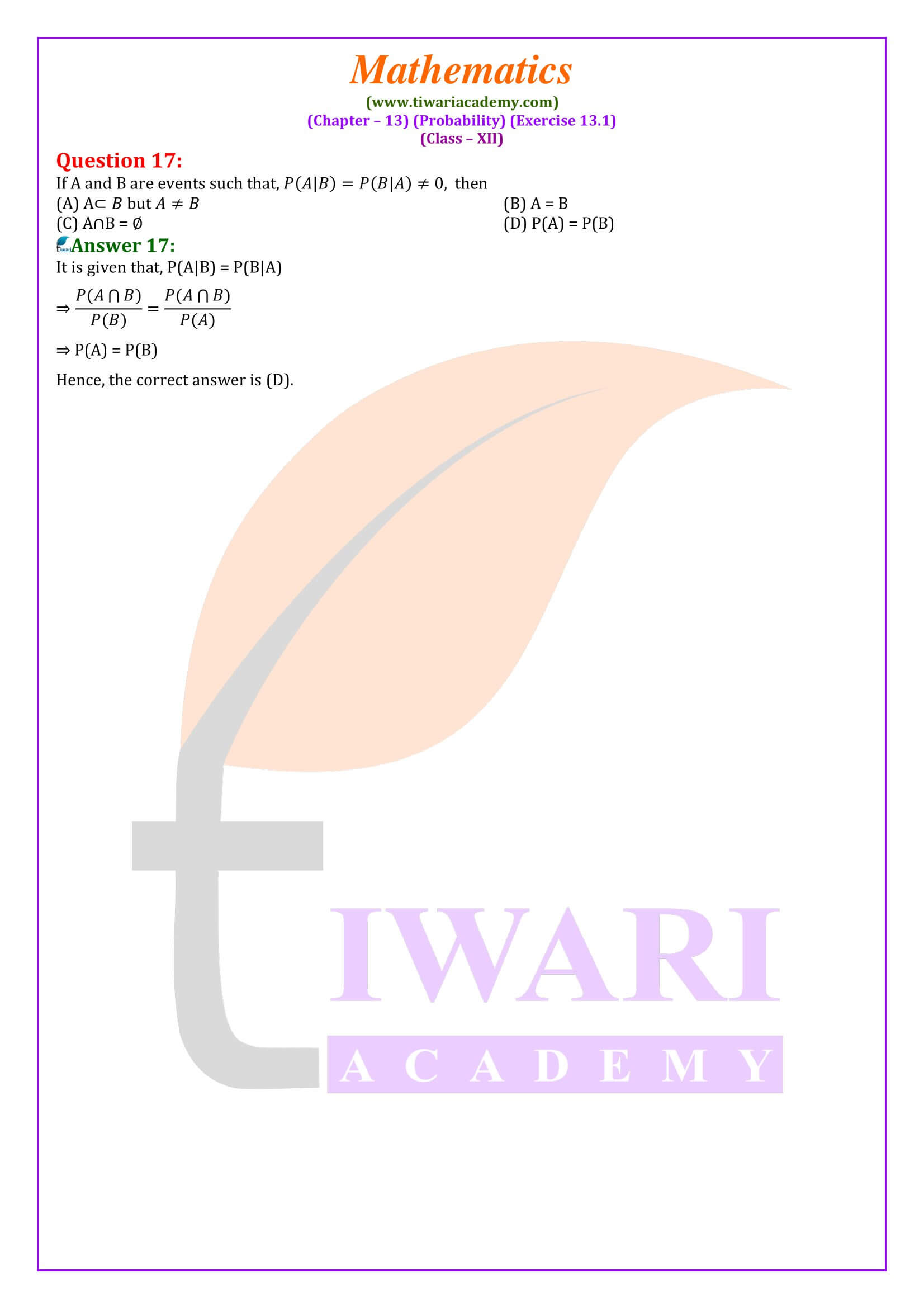NCERT Solutions for Class 12 Maths Chapter 13 Exercise 13.1 in Hindi and English Medium for academic session 2025-26. The ex. 13.1 of 12th Maths is revised according to rationalised syllabus and new NCERT textbook issued for CBSE 2025-26 Exams.
Class 12 Maths Exercise 13.1 in Hindi and English Medium
Class 12 Maths Chapter 13 Exercise 13.1 Solutions
All the contents are available in PDF as well as videos format free to use. We have updated all the contents as per the latest CBSE Syllabus 2025-26. Class XII NCERT Textbook Maths exercise 13.1 solution is also given here in the format of videos.
| Class: 12 | Mathematics |
| Chapter: 13 | Exercise: 13.1 |
| Chapter Name: | Probability |
| Content: | Exercise Solution and Extra Questions |
| Session: | CBSE 2025-26 |
| Medium: | Hindi and English Medium |
Class 12 Maths Chapter 13 Exercise 13.1 in Videos
Main concepts of Probability in Class 12 Maths
In Mathematics Class 12, Chapter 13, we will discuss the important concept of conditional probability of an event that occurred in another event, which will be helpful in understanding Bayes theorem, probability multiplication rules, and freedom of events. We will also learn an important concept of a random variable and its probability distribution, and also the mean and variance of a probability distribution. Class 12 Mathematics Chapter 13, we will study about importance of discrete probability distribution and use it in binomial distribution. Throughout Chapter 13 of class 12 Maths, we will discuss experiments that are likely to result equally, unless otherwise noted. Download Class 12 Maths App in English or Class 12 Ganit App in Hindi Medium free.
Bernoulli trials
Many experiments are bizarre in nature. For example, a tossed coin shows a ‘head’ or ‘tail’, a manufactured item may be ‘defective’ or ‘non-defective’, a question may be answered ‘yes’ or ‘no’, An egg is ‘hatched’ or ‘not hatched’, the decision is ‘yes’ or ‘no’, etc. In such cases, one of the outcomes is called ‘success’ and the other is ‘no success’ or ‘failure’. For example, when a coin flattens, if the presence of the head is considered a success, the presence of the tail is a failure.
Every time we bounce a coin or die or do some other experiment, we call it a test. If a coin is tossed, say, 4 times, the number of attempts is 4, each with two consequences, namely success or failure. The result of any test is independent of the result of any other test. In each of these tests, the probability of success or failure remains constant. These independent tests have only two results, usually referred to as “success or failure”, are called the Bernoulli test.
